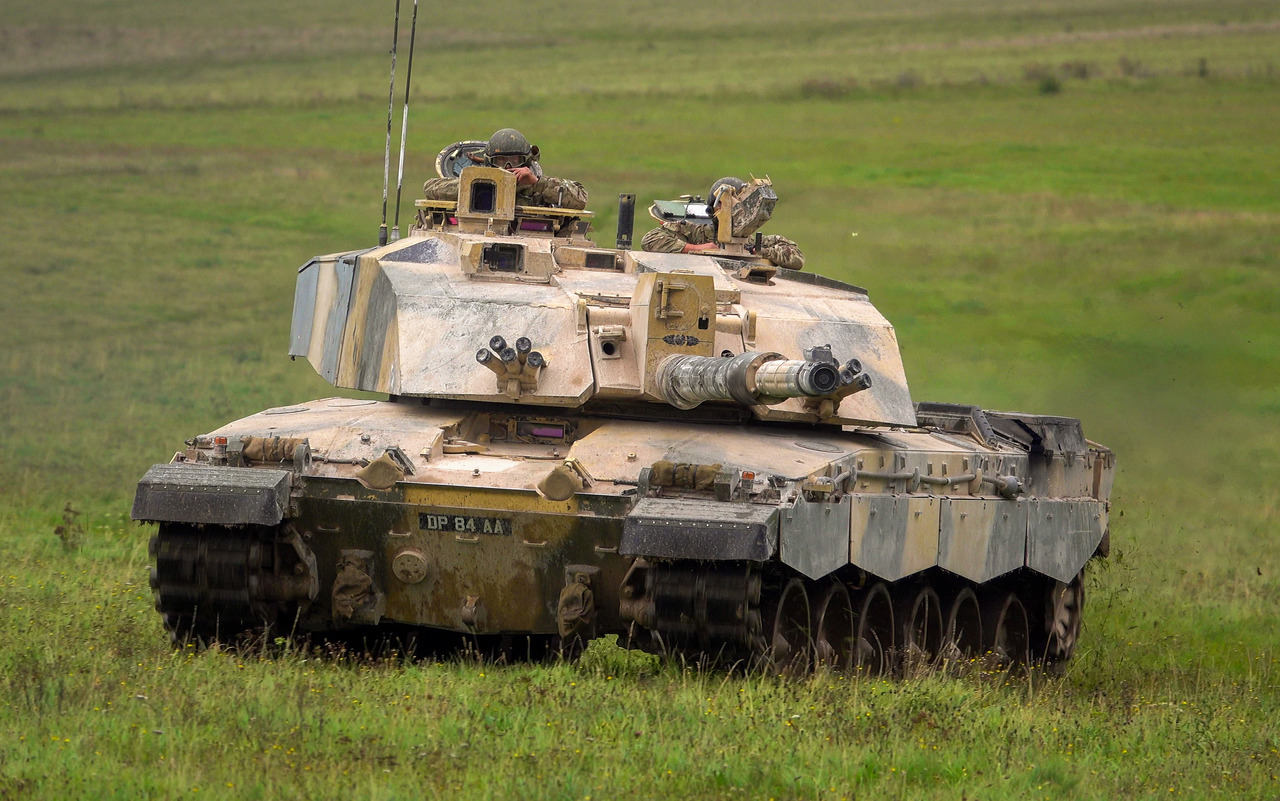
The Abrams, Challenger 2, and Leopard 2 tanks are seen as improvements for Ukraine’s outdated armored units.
Ever since Russia invaded Ukraine starting in February 2022, both Kyiv and Moscow have experienced substantial losses of their armored units. Tanks ranging from vintage World War II models to those developed during the Cold War and more modern Main Battle Tank (MBT) variants have all proven susceptible to sophisticated unmanned combat drones and cutting-edge antitank systems. To help restock Ukraine’s depleted inventory of MBTs, the U.S. along with several NATO partners has provided numerous Western-manufactured tanks for frontline support. As things stand now, Kyiv is utilizing an array of defense equipment including the American-built M1 Abrams, British-designed Challenger 2, and German-engineered Leopard 2 within its strategic defenses.
Introducing the M1A1 Abrams
The Abrams line of tanks originated from a cooperative U.S.-West German initiative aimed at developing advanced successors to replace both the M60 and Leopard 1 main battle tanks. Despite the new MBT-70 incorporating numerous state-of-the-art features, this combined development project eventually faltered because of financial limitations and differing opinions over certain designs. Consequently, the collaboration did not come into fruition as planned. Abrams tank Designed by Chrysler Defense, this tank emerged following the conclusion of the MBT-70 project. With its distinctive Chobham armor and M68A1 cannon, the Abrams offered exceptional protection and formidable firepower. Despite undergoing multiple upgrades through various iterations, even during the previous Biden administration, deliveries continued with the initial version: the M1A1 Main Battle Tank. variants to Ukraine. These Main Battle Tanks (MBTs) have seen action in battles but haven’t proven immune to Russia’s anti-tank unmanned aerial vehicles (UAVs) and additional weaponry.
Introducing the Leopard 2
Originally conceived to neutralize some of the most sophisticated main battle tanks in the former USSR’s arsenal, the German-manufactured system was intended for this purpose. Leopard 2 has once more engaged its former adversaries from the Cold War era. Developed in the mid-1960s as a replacement for the Leopard 1, the Leopard 2 entered service and quickly became known as the most advanced armored vehicle within the Warsaw Pact. Featuring a fully-stabilized Rheinmetall RH-M-120 120mm smoothbore cannon, an intricate fire-control system, and a laser rangefinder, the Leopard 2 is definitely a valuable addition to Kyiv’s present tank arsenal.
Introducing the Challenger 2
When discussing contemporary main battle tanks, the British ones come into play. Challenger 2 Considered as one of the top choices, the upgraded Challenger 2 has built upon advanced technology and insights gained from its predecessor, the Challenger 1, making it an enhanced version. The vehicle boasts better protection thanks to its Explosive Reactive Armor which enhances survival rates, along with its Chobham composite armor providing greater resistance against anti-tank weapons. When discussing firepower, the Challenger 2 comes equipped with the L30A1 tank gun—a 120mm NATO-standard main battle tank weapon. This information originates from Rheinmetall. manufacturer “Both the Commander and Gunner have access to optical and thermal imaging sights. Additionally, the Commander has an independent 360-degree panoramic sight. All sighting systems, along with the turret and gun, are completely stabilized, allowing for quick target acquisition whether stationary or moving.”
Although the Abrams, Challenger 2, and Leopard 2 tanks represent improvements for Ukraine’s outdated armored units, they still face significant threats from sophisticated unmanned aerial vehicles (UAVs), which can target even the most modern tank models.
About the Author: Maya Carlin
Maya Carlin The National Security Writer for The National Interest serves as an analyst at the Center for Security Policy and previously held the position of Anna Sobol Levy Fellow at IDC Herzliya in Israel. Her work has been featured in numerous outlets such as The NationalInterest,JerusalemPost, andTimesofIsrael. Follow her onTwitter: @MayaCarlin Carlin has had more than 1,000 articles published over recent years covering different defense topics.
Image: Shutterstock.






0 Comments